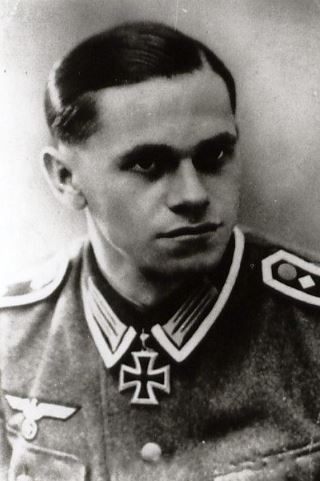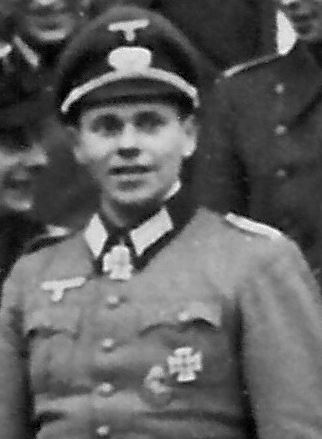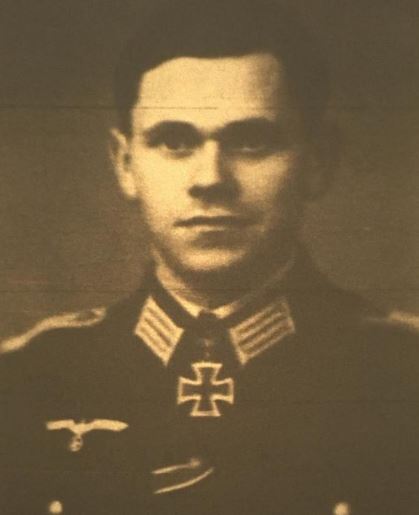Tykiel, Alfred (Schützen-Regiment 10)
- Date of birth:
- July 6th, 1911 (Rosengrund/Posen, Germany)
- Date of death:
- March 31st, 1981 (Dülmen/North Rhine-Westphalia, Germany)
- Nationality:
- German
Biography
Alfred Tykiel was born on 6 July 1911 in Rosengrund, Upper Silesia (prior to 1936 Rosengrund was called Sakrau, and after WW2 it was renamed Zakrzów and became part of Poland).
He entered the German Army on 1 April 1930 as a Reiter in 2/Reiter Regiment 11. Before the start of Operation BARBAROSSA he would distinguish himself in the Polish, West, and Balkan campaigns.
On 22 July 1941, Oberfeldwebel Tykiel became the first NCO of the German Army to be named in the newly created Honor Roll for his bravery and leadership during an action at Olejow, Ukraine just 20 days earlier. This action would lead to him being awarded the Knight’s Cross of the Iron Cross.
He was hospitalized from 1 September 1941 until 1 February 1942 in Breslau. After that he spent 4 ½ months in the convalescent company of Schutzen-Regiment 10. Upon the completion of his convalescence, he attended an officer’s training course and was commissioned as a Leutnant on 1 December 1942.
Leutnant Tykiel would go on to become an instructor at the panzer grenadier and panzer troop schools in Versailles from January 1943 through June 1944, and then would rejoin Panzer Grenadier Regiment 10 as the Commander of 6th Kompanie.
Involved in "Terrorististen einsatz (Frankreich)" from 27 Jun – 17 Jul 44, he received severe burns to both hands on 17 Jul 44 as the result of an incident involving a Molotov cocktail. It states he was hospitalized and his condition is unknown.
Promoted to Oberleutnant the 01.09.1944, RKT Tykiel survived the war.
He would go on to own and operate a driving school and passed away on 31 March 1981 in Dülmen/Nordrhein-Westfalen.
Do you have more information about this person? Inform us!
- Period:
- Second World War (1939-1945)
- Awarded on:
- October 1st, 1936
- Period:
- Second World War (1939-1945)
- Awarded on:
- October 2nd, 1936
- Period:
- Second World War (1939-1945)
- Awarded on:
- October 14th, 1939
- Period:
- Second World War (1939-1945)
- Awarded on:
- November 20th, 1939
- Period:
- Second World War (1939-1945)
- Awarded on:
- November 15th, 1940
- Period:
- Second World War (1939-1945)
- Rank:
- Oberfeldwebel (Warrant Officer)
- Unit:
- 6. Kompanie, II. Bataillon, Schützen-Regiment 10, 9. Panzer-Division, Heer
- Awarded on:
- July 22nd, 1941
- Period:
- Second World War (1939-1945)
- Rank:
- Oberfeldwebel (Warrant Officer)
- Unit:
- Zugführer, 6. Kompanie, II. Bataillon, Schützen-Regiment 10, 9. Panzer-Division, Heer
- Awarded on:
- August 6th, 1941
Like a senior sergeant, Tykiel won the Knight's Cross
On the 2nd of July. In the early morning hours a battalion of an Ostmärkische rifle regiment had reached the northern exit of Olejov. A halt interrupted the further advance. The battalion commander decided to 'look around' for a while in the grounds and suddenly found himself in a valley on a forest track, just under 500 meters left of the advance road, he noticed Soviet vehicles and initially 30 men.
A victorious fight in the forest
That was a task! Immediately, a company was deployed with the use of tank hunter weapons to attack and destroy this enemy, who threatened the left flank of the battalion. A company with one platoon attacked the forest on a wide front, with the fire support of a mortar squad and a platoon of machine guns from another company. After the fierce forest fight, the Soviets were repulsed and expelled. In hard forest warfare, the Soviets were thrown and expelled here. A patrol had stalked the front tanks. He came back and reported that they were abandoned.
Under the command of Sergeant Tykiel, the second platoon of the company advanced toward the right-wing of the forest. Here scouts soon discovered that it was free of enemy action. The task of the company seemed to be over. Without a special order, Sergeant Tykiel then approached the foremost tanks after the battle to see if they were truly abandoned.
With gasoline canisters against tanks
Sergeant Tykiel examined a tank and found the hatches locked. This fact startled him. Through the observation slot, he fired inside the tank and immediately found himself under a strong fire from another, slightly heavier tank. Now came the great hour of the Ostmärkische Oberfeldwebel. On his own initiative, he formed an assault unit to destroy Soviet tanks. Without any anti-tank weapons, only with gas canisters and hand grenades, he and his assault unit moved to attack and distinguished themselves with outstanding bravery and exemplary devotion. Before the fight ended, the senior Sergeant Tykiel with his assault unit destroyed fifteen Soviet tanks and completely eliminated the threat to the flank of the battalion, thanks to which the further march could be continued. The Knight’s Cross awarded to him is a well-deserved proof of recognition for this remarkable feat of arms.
- Period:
- Second World War (1939-1945)
- Awarded on:
- April 1st, 1942
Sources
- Photo: Knight's Cross Holders Photo Database - Axis History Forum
- - FELLGIEBEL, W.P., Elite of theThird Reich, Helion & Company Limited, Solihull, 2003.
- Scheibert, Horst. Die Träger der Ehrenblattspange des Heeres und der Waffen-SS/ Die Träger der Ehrentaffelspange der Kriegsmarine/ Die Inhaber des Ehrenpokals für Besondere Leistung im Lukftkrieg. Friedberg, Ger.: Podzun-Pallas Verlag, 1986, ISBN 3-7909-0283-7
- Axis History Forum via Awardholders / unit
- wehrmacht-awards.com













